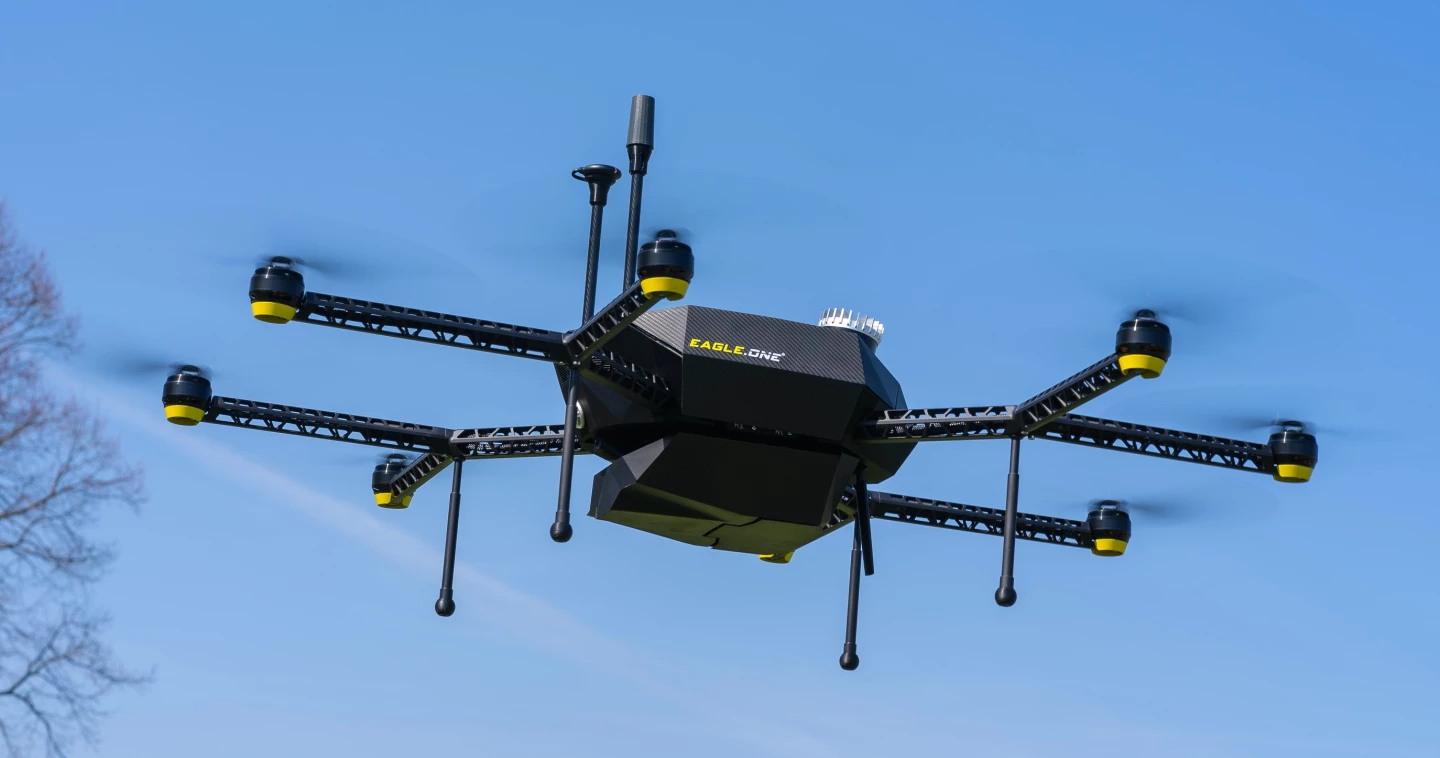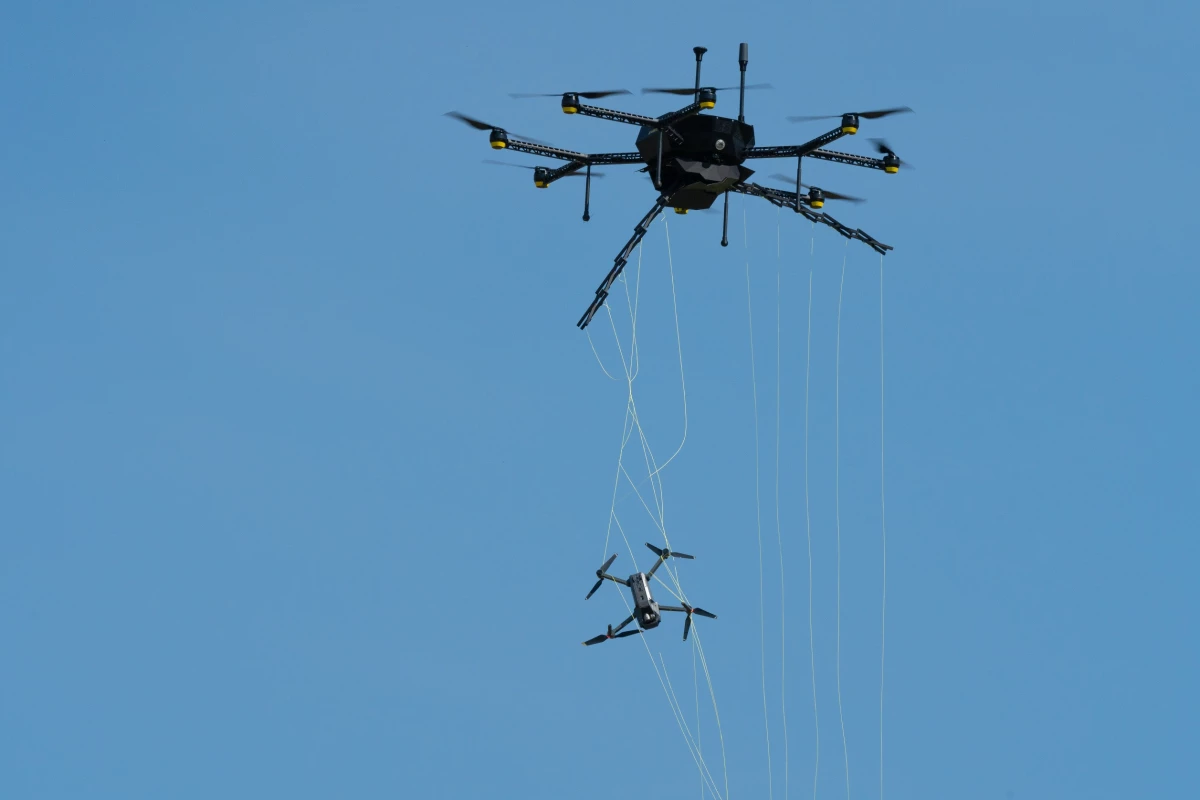There are now a number of systems in which "good" drones are used to disable "enemy" drones, such as those conducting spying missions. A new system takes a safer approach to the task, in that the captured drones don't simply plummet to the ground.
In many existing drone-vs-drone systems, the defending drone shoots a net at the enemy drone. The latter drone's propellers then get tangled in the net and stop spinning, causing the aircraft to fall to the earth. Hopefully, it won't hit anyone (or any cars, buildings, etc) when it lands.
The European AUDROS (AUtonomous DROne System) project is developing a less risky alternative.
In the current version of the system, an Eagle One octocopter (made by Czech company Fly4Future) is based out of a battery-charging docking station (made by Polish company Dronehub).
When an approaching enemy drone is detected, the Eagle One autonomously takes off, flies to that drone's location, positions itself above that drone, then releases a row of dangling cords which are deployed from two fold-out booms on its underside. The enemy drone's propellers get caught in those cords, just as they would in a net. Because the cords are still attached to the Eagle One, however, the captured drone stays hanging beneath it until it lands.

It should be noted that in at least one existing drone-netting system, the net stays attached to the defending drone by a tether after being shot out, so the captured drone doesn't just fall to the ground. That said, because the Eagle One has two booms' worth of cords, it can capture two drones per flight. By contrast, most net-shooting drones have only one net, so they have to return to their base after bringing down just one other drone.
The system was recently successfully tested in the Czech Republic, in close cooperation with the Czech prison service – one possible application of the technology would be to keep drones from being used to smuggle items into or out of prisons. Along with Fly4Future and Dronehub, other partners in the AUDROS project include Czech companies BizGarden and GINA Software.
Source: Dronehub





